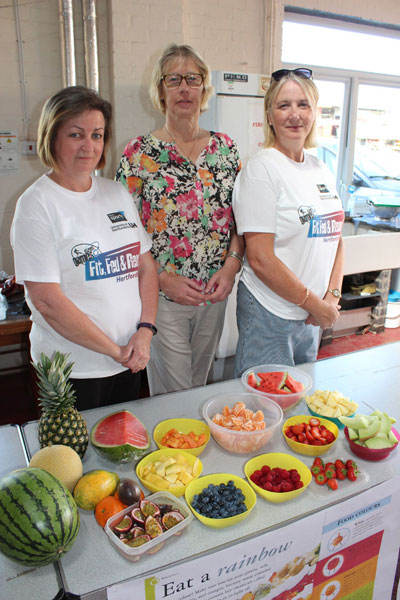Hertfordshire’s whole systems approach to child obesity is built on ten pillars of action. It includes a successful weight management service that families can refer themselves to, an innovative active school travel plan that discourages car drop-offs and 10 “healthy hubs” across the county.
The challenge
Some 19.3 per cent of Hertfordshire children aged four to five and 28.6 per cent of those aged 10 to 11 are overweight or obese. While the figures are significantly lower than the national average for England, there are areas of inequality. In the Broxbourne district, for example, 36.1 per cent of Year 6 pupils have excess weight.
The approach
The county council’s approach for supporting and promoting healthy weight, approved in summer 2019, is based on ‘10 Pillars of Action’; a healthy environment, engaging with neighbourhoods and communities, a ‘first 1000 days’ approach - from the start of pregnancy to age two, schools and workplaces, focusing on young people, focusing on children and adults with special needs, helping people to regain a healthier weight, learning from research, evaluating, digital technology and behavioural science.
A detailed work programme has been produced covering each pillar. Two officers have been recruited to work on the strategy and coordinate action.
Standout initiatives include actions under the “first 1000 days” banner. Family centre staff have Unicef baby friendly accreditation and are trained to promote breast feeding, healthy eating and active play.
Healthy lifestyle midwives are in post to train other midwives to work with pregnant women on healthy weight and healthiest baby support. The council has invested in a 0-19 service where health visitors and school nurses work together.
Measures to improve active school travel are being incorporated into the design of school buildings. At a new secondary school in Harpenden, only buses are allowed to stop and drop within 500 yards of the site. Similar car exclusion zones will be considered for new schools.
Building on the success of the family weight management scheme Beezee Bodies, services are in the process of being recommissioned around a new four tiered approach which will consist of universal, early years, a stepped approach as families need it and school interventions.
Hertfordshire is also developing 10 healthy hubs, jointly funded by the county and district councils, where residents can go to get health support and social prescribing. The Stevenage hub is specifically aimed at young people and will offer a range of support from specialist exercise equipment to mental health appointments, sexual health checks and weight management classes.
Outcomes
The Beezee Bodies, 17-week programme, which families can refer themselves to, produces positive results. Some 76 per cent of those who enrol complete the course and 89 per cent of those reduce or maintain their weight score. Between April and July 2019, 133 families were enrolled on the programme.
“The programme does very good things,” said Professor Jim McManus, Director of Public Health at Hertfordshire County Council. “It uses a behavioural science and social support approach which helps to attract families in and keeps them hooked.”
The difference to our lifestyle is amazing; we've both lost weight but more than that, we are both happier and emotionally stronger."
Chris Lea explains how Beezee Bodies has helped him and his son Ross get healthier.
The Fit, Fed and Read scheme, funded in part by public health and run by fire service staff, is a particularly popular and effective programme which combines physical activity, healthy eating and improving children’s literacy and life skills.
Lessons learned
Weight management services alone need to be part of a WSA, according to McManus. They also require a lot of work to create and sustain motivation and identity among participants.
Political leadership is vital, as is the understanding across council departments that tackling obesity is “part of their day job”.
“It is not about chucking money at it,” said McManus. “It is about doing the day job in a way that understands the drivers and what you can do with them. We’re working with all ten districts to get health embedded in their planning process and our planning process, led by our healthy places coordinator.”
Co-commissioning makes sense. The NHS is about to get a government funding boost and councils are well placed to help it deliver prevention services.
Measures such as car exclusion zones around schools can be unpopular. Councils have to be prepared to take difficult decisions and use obesity and other data, such as air quality and asthma rates, to justify them.
How will the approach be sustained?
The 10 pillar action plan is under development and will outline measures in the short to longer term.
Councillor Tim Hutchings, Cabinet Member for Public Health and Prevention at Hertfordshire County Council, said: “We recognise that sustainable change will only be achieved through the active engagement of communities. We have a wide range of initiatives and partnerships in place that enable us to look beyond individual behaviours to see how we can improve the local environment.
“We are justifiably proud of this whole systems approach and are confident it is helping families to make healthy lifestyle choices and setting up good habits early.”
Contact
Sue Matthews, Consultant in Public Health at Hertfordshire County Council
[email protected]

